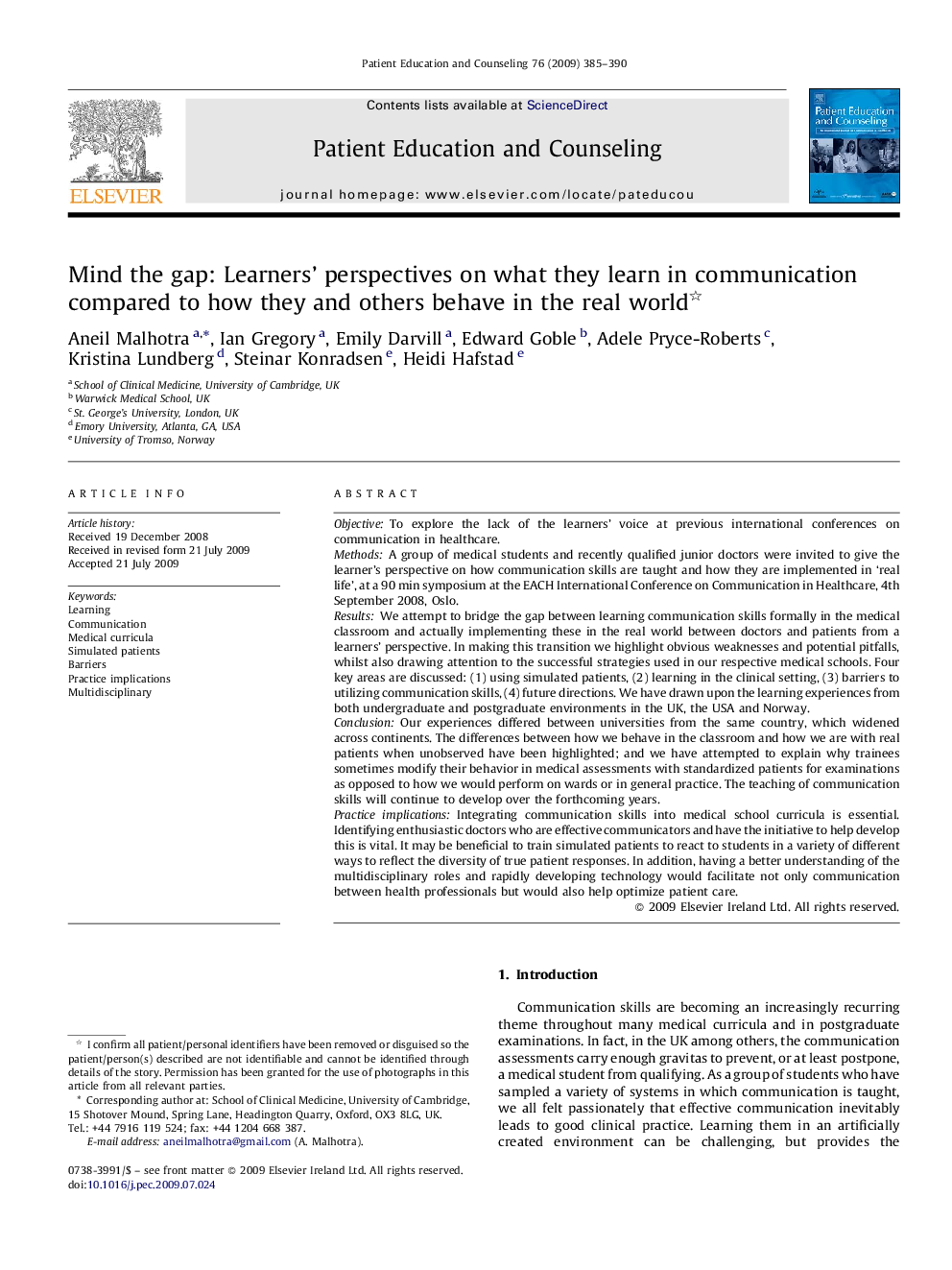| Article ID | Journal | Published Year | Pages | File Type |
|---|---|---|---|---|
| 3815050 | Patient Education and Counseling | 2009 | 6 Pages |
ObjectiveTo explore the lack of the learners’ voice at previous international conferences on communication in healthcare.MethodsA group of medical students and recently qualified junior doctors were invited to give the learner's perspective on how communication skills are taught and how they are implemented in ‘real life’, at a 90 min symposium at the EACH International Conference on Communication in Healthcare, 4th September 2008, Oslo.ResultsWe attempt to bridge the gap between learning communication skills formally in the medical classroom and actually implementing these in the real world between doctors and patients from a learners’ perspective. In making this transition we highlight obvious weaknesses and potential pitfalls, whilst also drawing attention to the successful strategies used in our respective medical schools. Four key areas are discussed: (1) using simulated patients, (2) learning in the clinical setting, (3) barriers to utilizing communication skills, (4) future directions. We have drawn upon the learning experiences from both undergraduate and postgraduate environments in the UK, the USA and Norway.ConclusionOur experiences differed between universities from the same country, which widened across continents. The differences between how we behave in the classroom and how we are with real patients when unobserved have been highlighted; and we have attempted to explain why trainees sometimes modify their behavior in medical assessments with standardized patients for examinations as opposed to how we would perform on wards or in general practice. The teaching of communication skills will continue to develop over the forthcoming years.Practice implicationsIntegrating communication skills into medical school curricula is essential. Identifying enthusiastic doctors who are effective communicators and have the initiative to help develop this is vital. It may be beneficial to train simulated patients to react to students in a variety of different ways to reflect the diversity of true patient responses. In addition, having a better understanding of the multidisciplinary roles and rapidly developing technology would facilitate not only communication between health professionals but would also help optimize patient care.
